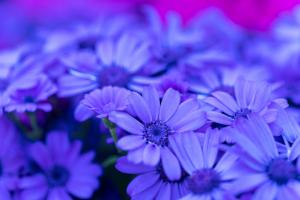What is the Best Cherry Tree to Plant?
Cherry trees are a popular choice for gardeners and landscapers alike, thanks to their delicate beauty and delicious fruit. When it comes to choosing a cherry tree to plant, however, there are several factors to consider. Here, we’ll explore the most important factors to help you decide on the best cherry tree for your needs.
Types of Cherry Trees
There are two main types of cherry trees: sweet cherry and sour cherry. Sweet cherry trees produce large, plump fruit that is typically eaten fresh. Sour cherry trees, on the other hand, produce smaller, more tart fruit that is commonly used for cooking and baking.
Within these two main types, there are numerous varieties to choose from. Some popular sweet cherry varieties include Bing, Rainier, and Stella. Popular sour cherry varieties include Montmorency and Early Richmond.
Climate Considerations
Another important factor to consider when choosing a cherry tree is your climate. Cherry trees require a certain number of chilling hours, or hours of cold temperatures below a certain threshold, in order to properly fruit. The required number of chilling hours varies depending on the variety of cherry tree.
Some sweet cherry varieties, such as Bing, require a moderate number of chilling hours (800-1,000 hours). Other sweet cherry varieties, such as Rainier and Stella, require a smaller number of chilling hours (500-600 hours). Sour cherry trees generally require fewer chilling hours than sweet cherry trees.
If you live in an area with a mild climate, it may be best to choose a cherry tree variety that requires fewer chilling hours. If you live in an area with a colder climate, you may be able to choose a variety that requires a higher number of chilling hours.
Space Requirements
Cherry trees can grow quite large, so it’s important to consider how much space you have available before choosing a variety. Sweet cherry trees can grow up to 30 feet tall and wide, while sour cherry trees typically reach a height of 15-18 feet and a spread of 12-15 feet.
If you have limited space, you may want to consider a dwarf cherry tree variety. Dwarf cherry trees are smaller in size and can reach a height of around 8-10 feet. Some popular dwarf cherry varieties include Stella and Lapins.
Pollination Needs
Finally, it’s important to consider the pollination needs of the variety of cherry tree you choose. Cherry trees are not self-pollinating, which means that they require another cherry tree of a different variety in order to produce fruit.
When choosing a cherry tree, it’s important to choose one that is compatible with the varieties of cherry trees in your area. Some cherry tree varieties, such as Bing and Rainier, are not self-fertile and require another compatible cherry tree for pollination. Other varieties, such as Stella and Lapins, are self-fertile, which means that they can be planted alone and still produce fruit.
Conclusion
Choosing the right cherry tree for your needs requires careful consideration of several factors, including the type of cherry tree, climate considerations, space requirements, and pollination needs. By taking the time to research your options and consider your specific needs, you can choose the perfect cherry tree for your garden or landscape.

 how many times do yo...
how many times do yo... how many planted tre...
how many planted tre... how many pine trees ...
how many pine trees ... how many pecan trees...
how many pecan trees... how many plants comp...
how many plants comp... how many plants can ...
how many plants can ... how many plants and ...
how many plants and ... how many pepper plan...
how many pepper plan...
































